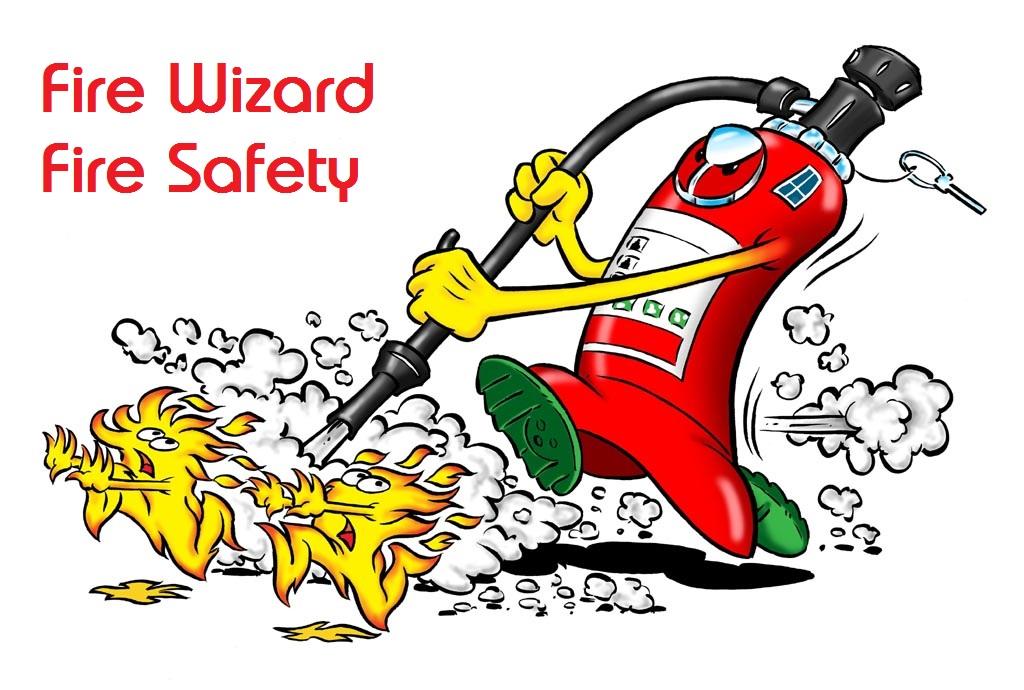-
Posts
2,711 -
Joined
-
Last visited
Everything posted by AnthonyB
-
England/Wales - No, possibly and No. Scotland - Yes, possibly and No Assuming England/Wales Every premises, including buildings containing two or more dwellings, have to comply with the Fire Safety Order (only the actual dwellings are exempt) the cornerstone of which is the Fire Risk Assessment. Smoke alarms/Fire Alarm Systems depend on whether it's purpose built or a conversion, the former often don't require them as the common areas are risk free and each flat is a fire resisting 'box' with only the flat on fire needing to leave. Conversions (& in some specific situations purpose built flats as an exception rather the norm) usually require full alarm systems. Where a block of flats has a smoke vent system it will have smoke detectors attached, but as it's not an alarm system you wouldn't expect sounders or call points. Fire doors - Flat front doors should be (& this is the case for the best part of 60 years) fire doors
-

When selling flat, do I need a fire risk assessment?
AnthonyB replied to a topic in Fire Risk Assessments
Have there been any significant changes since 2015? If not it should suffice with a review appended confirming that the premises are unchanged and any protective measures are still being maintained which you should be able to do yourselves -
It's not compliant with current legislation - there MUST be a smoke alarm in the hall & landings (or equivalent for open plan) of a rental premises. An optical detector is less sensitive to cooking than the ionisation ones and it should be spaced as far away from the kitchen bit as possible whilst still meeting spacing requirements. Hundreds of new build open plan flats manage to do this every year so it's not a problem.
-

Fire Alarm & detection in Tennis Clubhouse
AnthonyB replied to murray mckay's topic in Fire Risk Assessments
Size and layout will determine if it actually needs anything at all, it doesn't sound like it needs much at all I'd need to see the plans or a sketch. -
The manufacturer's current data sheet is here, it shows it's electrically safe: https://www.britannia-fire.co.uk/wp-content/uploads/2019/05/P50-F-Class.pdf
-
This work may require Building Control approval in which case they would advise. However, in principle, if you are maintaining the correct thickness and layering of the correct plasterboard, suitably fixed, it should be OK
-
What are the travel distances to the final exit, is there more than one exit? Depending on size a protected route may not be required and the partitioning is purely functional
-
The vents are required - but they should be safe from someone falling through - sounds like they should be fenced off. Installation may be in breach of H&S legislation as oppose to fire safety, you should enquire with the HSE or Local Authority Environmental Health.
-
No, not required unless as a temporary measure due to combustible cladding being involved or some other critical defect in structure. Only requires a smoke control system (unless using manually openable windows/vents as part of the small development exemption) which would have detection to open the vents (no alarm sounders, etc). Not required in current Building Regulations (or those at the time of build): https://assets.publishing.service.gov.uk/government/uploads/system/uploads/attachment_data/file/937931/ADB_Vol1_Dwellings_2019_edition_inc_2020_amendments.pdf Not required in existing flats guidance (currently being revised so no on line copy available) either - in the interim the above document is referenced.
-
You would have to check that the street lighting was on as required as local authorities are reducing the lighting up times for street lights and are bringing in LED fittings that cast their light differently to the old sodium lights and no longer provide sufficient light. It's a common retrofit, but the guidance does state that it's a low priority in small blocks and other issues take precedence.
-

Emergency lights with directional stickers
AnthonyB replied to Hyperion's topic in Emergency Lighting
Often they are placed on them when they shouldn't be. The exit legend kits are for when a fitting is to be installed as an internally illuminated exit sign - something separate from the provision of emergency lighting of escape routes, high risk tasks, etc, etc. Too many untrained installers think because a light fitting includes a legend kit they have to put it on - far too many times I have to go around ripping them off so the correct illumination is provided. -
Yes - use Blue 60 foam? Why can't you?
-
Oh dear, looks like occupancy before completion, a common trick to get money in to help cash flow. Fire Service enforcement probably wouldn't get too bothered about the tiles, but they may well be interested in these conditions.
-
Not unless some temporary measures are in place to ensure the alarm can still be promptly raised - the size and type of premises determines what these would be.
-

Is emergency lighting necessary in a small block of flats?
AnthonyB replied to a topic in Emergency Lighting
Yes, it's in the official guidance (which with the Fire Safety Act will have statutory backing in residential properties) and borrowed external lighting isn't always reliable and sometimes has to be discounted in assessments. In small blocks the retrofit of EL is considered a very low priority compared to other issues such as fire doors etc which are the main priority so you would only expect it actioned once all other issues are completed. It can, however, be what is called 'non maintained' which means that the lights are not lit (other than a small green LED showing the power is on to the unit) except when the mains supply fails - it sounds like your units are installed as 'maintained', in other words always lit. With many modern fittings you can set them for either mode as required so the existing units could in theory be altered rather than replaced. To be fair as EL fittings are almost invariably LED the electricity usage is minimal compared to the old fluorescent tube units. -
That's your interpretation of course, but does not reflect what is being enforced out there, nor makes some of the massive gaps that shoddy contractors are putting in acceptable.
-

Does a church have to give fire safety announcements?
AnthonyB replied to a topic in Fire Safety in Churches
You've read the guidance - that's your answer. Admittedly it's often not followed and not always strictly enforced but that doesn't make it right. -
At least it allows me to see the firestopping appears correct! The tiles don't appear to be part of the compartmentation, the usual issue with the odd missing tile is allowing smoke and combustion products to spread un-noticed and, if the void has no detectors, allow the fire to develop more before detection is activated as the rising smoke enters and layers above the corridor detectors.
-
An enforcing authority would usually look for the D1 equipment and may require you to provide this and issue a deficiency notice if a lower specification was present. Insurers and holiday let host sites also may have minimum requirements. If it wasn't a holiday let battery units would be accepted as long as it hadn't been rewired in recent years (when it should have had the system upgraded to mains) It's probably best asking your local council & fire service as they ultimately enforce and sometimes take a relaxed approach to certain requirements and may say battery only will do - the advice on here is taken from the benchmarks used by risk assessors, courts and enforcers, but each case is different. It's a shame that the fire safety requirements were only considered after all works, it should be part of the planning stage to avoid disruption.
-
As it's considered commercial sleeping risk rather than a flat on a AST the expectation would be for Grade D1 (mains with tamperproof battery) system that are interconnected. It's a long time since you needed to link via bell wire and now almost universally radio link units are used. You can find D1 Radio link alarms here https://www.safelincs.co.uk/smoke-alarms/
-
This is the link to the appropriate Government fire safety guidance for your usage of the flat: https://assets.publishing.service.gov.uk/government/uploads/system/uploads/attachment_data/file/11085/payingguests.pdf The rest of the building (common parts) is the responsibility of the freeholder or lease holder's 'right to manage' company with regard to risk assessment and fire safety provisions.
-
Looks electro-mechanical and not usually allowed on exits, absolutely not if not failsafe. Depending on the type of override if it was fail safe there are maintenance/testing obligations
-
Risk assessment guidance suggests in the smallest premises (which being a couple of ground floor rooms this would fall into) that sometimes torches are sufficient. Power failure is not exclusive to fire and you have to consider also the impact of a sudden loss of power on any procedures in progress. Even if it is determined that 'proper' emergency lighting is required you may find that a simple LED bulkhead (e.g. https://www.safelincs.co.uk/eden-led-emergency-bulkhead-light/) in each room and the entrance foyer (3 of in total based on your layout) may suffice, wired off the normal lighting circuit if installed as non maintained (lit only on power loss or, if it has to be on it's own circuit (usually due to a lack of a readily available permanent live in the ceiling cables to each light from the switch) installed as maintained (always lit)
-
No, you aren't competent by your own admission. You may be able to test them, but unless an electrician conversant with commercial premises (not just Part P) and the regulations regarding EL and how they should be cabled and wired then you should not be repairing/replacing/adding.
- 23 replies
-
- emergency light testing
- emergency lighting
-
(and 2 more)
Tagged with:
-
Read where?

